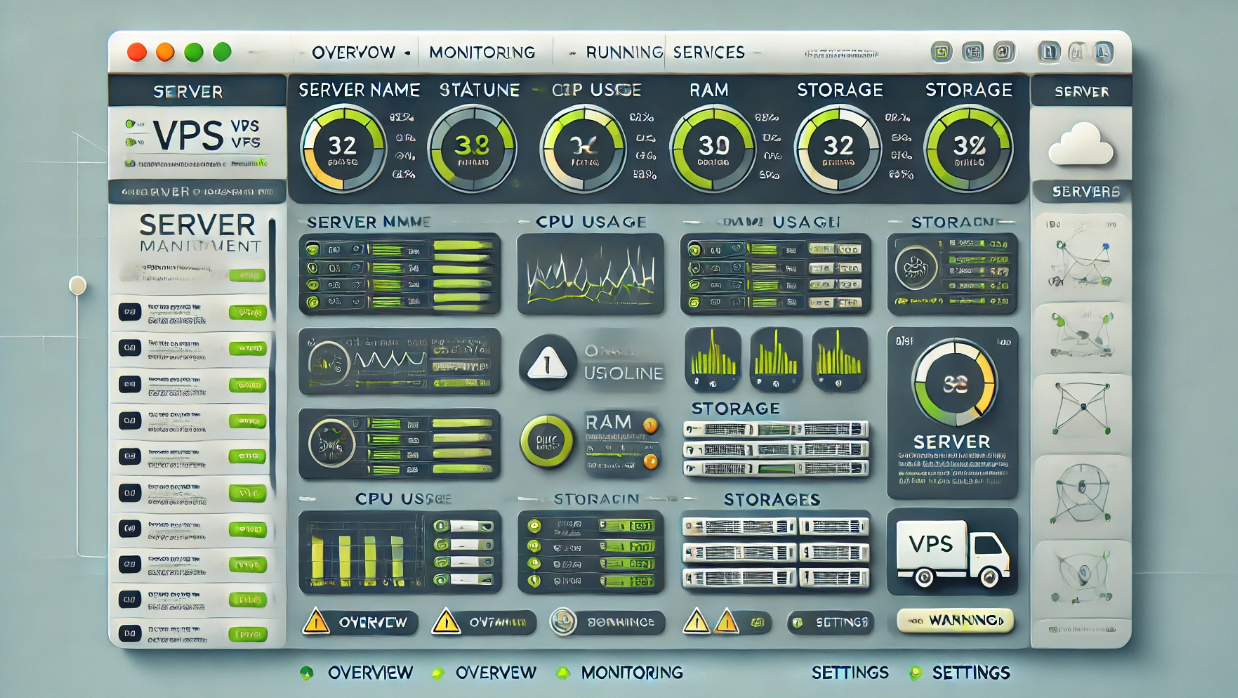Best Practices for Managing Multiple VPS Servers
Meta Description: Managing multiple VPS servers? Discover the best practices for streamlined monitoring, backups, updates, and security. Ideal for sysadmins, agencies, and DevOps teams.
Introduction: When One VPS Becomes Ten
It starts with a single VPS for a project. Then another. And another.
Suddenly, you’re managing a fleet of VPS servers — and things can quickly spiral into chaos without a strategy.
Whether you’re a system administrator, developer, or agency managing client infrastructure, these best practices will help you maintain control, security, and sanity across all your VPS environments.
Let’s dive into the smart way to manage multiple VPS servers — without losing sleep or breaking production.
1. Use a Centralized SSH Management Tool
Managing 10+ servers means you need quick, secure access.
Tools to Help:
-
Termius or MobaXterm – SSH manager with host grouping
-
SSH Config File – Use
~/.ssh/configto alias servers -
Jump hosts (bastion servers) – Secure single-entry points to internal servers
Always use SSH key-based authentication, and never share passwords across servers.
2. Tag, Label, and Document Everything
Track server roles, domains, clients, and environments. Use:
-
Hostnames that follow a naming convention (e.g.,
web-prod-nyc-01) -
Tags or labels in your VPS provider dashboard
-
A shared document or password manager to log access details
Clarity saves hours when issues arise — especially with multiple team members.
3. Automate Configuration and Deployment
Don’t repeat the same setup 10 times.
Use tools like:
-
Ansible – For server configuration (users, firewalls, software)
-
Terraform – For infrastructure provisioning
-
Docker + Compose – For containerized environments
-
Bash scripts + cron jobs – For custom recurring tasks
⚙️ Automation reduces human error and speeds up onboarding.
4. Set Up Centralized Monitoring and Logging
Avoid jumping into each server to check for issues. Instead:
-
Install Netdata, Zabbix, or Grafana Agent
-
Use a logging stack (e.g., ELK or Loki) to track errors across nodes
-
Get uptime alerts with tools like UptimeRobot, Pingdom, or StatusCake
Know about issues before your users do.
5. Standardize Backup Policies Across All VPS
Ensure every server:
-
Has automated daily/weekly backups
-
Sends backups offsite (to S3, another server, or cloud bucket)
-
Includes both file system and database backups
Track backup status with logs or backup dashboards.
Data loss is preventable — if you’re prepared.
6. Enforce Security Across the Fleet
Every VPS should follow these baseline security steps:
-
Disable root login
-
Use SSH key authentication
-
Install and configure fail2ban
-
Set up UFW or iptables firewall
-
Keep software and OS up to date
-
Run regular vulnerability scans
For larger environments, consider:
-
OpenVAS, Lynis, or Nessus for audits
-
VPNs or private networks between servers
️ One weak server can compromise the whole network — secure all of them.
7. Keep Software and Packages Updated
Outdated software = security risk.
Best practices:
-
Enable automatic security updates where possible
-
Use Ansible playbooks or scripts to push updates to all servers
-
Reboot responsibly — stagger reboots to avoid downtime across services
⏳ Schedule routine maintenance windows, especially for live production environments.
8. Centralize DNS and Reverse Proxy Routing
Managing multiple VPS domains? Simplify DNS using:
-
Cloudflare or DNSMadeEasy for centralized DNS management
-
Nginx Proxy Manager or Traefik to route traffic from a central proxy
This reduces the need for duplicating SSL, redirects, or IP rules across servers.
9. Create a Recovery and Incident Response Plan
Prepare for the worst:
-
Have a playbook for outages, DDoS, or breaches
-
Know how to restore from backups quickly
-
Use monitoring to detect changes (e.g.,
AIDE,Tripwire)
Practice disaster recovery drills periodically.
Don’t wait for a crisis to figure out your response.
10. Consolidate When Possible
Sometimes, managing fewer VPS servers is the best strategy:
-
Consider consolidating micro-services on fewer nodes
-
Use containers to isolate apps instead of full VMs
-
Scale vertically when cheaper than scaling out
Efficiency is about using the right number of servers — not the most.
✅ Final Thoughts: Scale Smart, Not Sloppy
Managing multiple VPS servers doesn’t have to be overwhelming.
With the right tools and practices, you’ll:
-
Maintain security and uptime
-
Deploy faster and more reliably
-
Sleep better knowing your infrastructure is under control
Whether you’re managing 3 servers or 300, structure and automation are your best friends.

